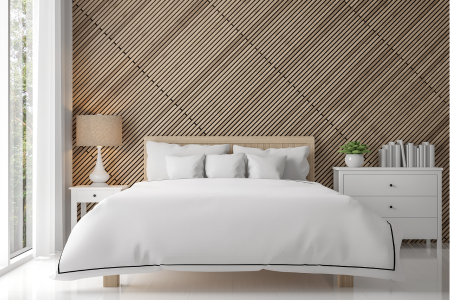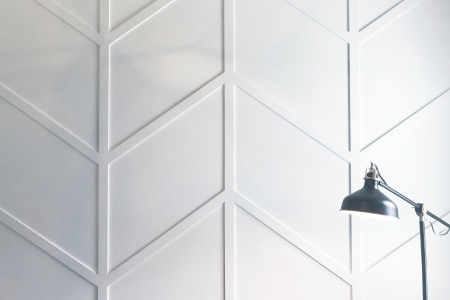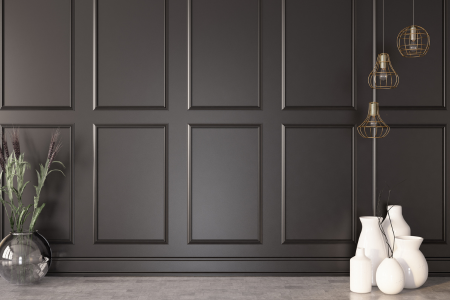Who said that living space should always be neutral? Why should we avoid adding some personality to our space? Sometimes parts of our home such as decor, furniture, and wall color are not always fun and exciting. Fortunately, there are ways to spruce up your living space to make it more interesting. With a little creativity, you can make it a beautiful place to spend time.
The world of design has figured out a way to bring life back to any space by installing decorative wall paneling. This type of wall art is unique and chic, and less expensive than permanent changes in the home. It is a perfect way to ditch the boring old paint and bring some excitement back into your bedroom, living room, or dining area.
Should you Consider Decorative Wall Panels?
Many people are familiar with wall paneling such as beadboard, wainscoting, shiplap, or barnwood. However, there are also more unique options such as 3-D panels and patterned millwork panels. These panels are installed directly onto the wall surface and may cover a portion of the wall or the entire wall.
The materials and designs of wall panels have come a long way since its heyday in the 1970s. Some popular materials for wall paneling are bamboo, PVC, tin, faux leather, stone, and brick. These materials are cost-effective and will not hurt your pocketbook compared to other materials on the market. There are numerous colors and pattern options to complement your space.
Additionally, the quality of wall panels has significantly improved over time. Faux materials provide the same aesthetic as natural materials, and they are simple to install. Many wall panel options are peel and stick or can be set up with a simple adhesive. Wall panels do not have to be a permanent design choice and can be swapped out for a new design in the future.
Wall Panel Perks
To determine if wall paneling is the right design choice for your home, consider a few perks of using them:
Wall Panels Hide Imperfections
If your walls have holes, small cracks, or other cosmetic issues, then utilizing wall paneling to cover up those imperfections is a great option. Depending on the panels you choose, you likely will not have to make any repairs before you begin hanging the paneling- the panels can completely cover the parts of the wall that need a little TLC.
Installing wall paneling is also a strategy to keep the walls looking nice while providing a little protection for older wall material from further damage or wear.
They Are Low Maintenance
Wall paneling is typically durable, wear resistant, and requires very little upkeep. Scuffs or fingerprints can easily be cleaned off with household cleaning supplies. The panels can also be painted, allowing you to give them a quick refresh if they become too dirty, look a little dull, or if you just want to give the room a new look.
Wall Panels Help Repurpose Rooms
If you have an empty room or under-used space, wall panels can be a great way to give it new life. For example, adding shiplap to an accent wall creates a great place to hang arts and crafts, helping transform a small bedroom into a craft studio. Adding millwork to a guest bedroom updates the aesthetic so your guests get a spa-like feel. Some wall panels even have insulating properties that can withstand damp conditions, making the basement man-cave or home theater a possibility. Wall panels are a quick design tool to help you repurpose various spaces in your home.
They Are Cost Effective
Wall panels range in price, but many options are available for less than a dollar per square foot to a few dollars per square foot. And because panels can easily be installed by the homeowner, installation/labor costs can be avoided. Although this is likely more expensive than a can of paint, it is significantly less expensive than a full room remodel.
Where Should You Install Panels?
Regardless of the size of your home, it does not make sense to install panels on every wall in a room, or a significant portion of your home. In fact, too many panels can make a room feel smaller! Instead, use paneling to create accent walls and visual interest in your space. For example, consider the wall behind a bed (the wall the headboard is on), the lower portion of a hallway, the breakfast nook, or a wall that has spans multiple levels (near stairs, or in a room with loft space).
Conclusion
If you are in the market to change up your interior design, choose wall panel designs and materials that you love and want to look at every day. There are unique, durable, colorful, and practical choices available for your home. The possibilities are endless!



